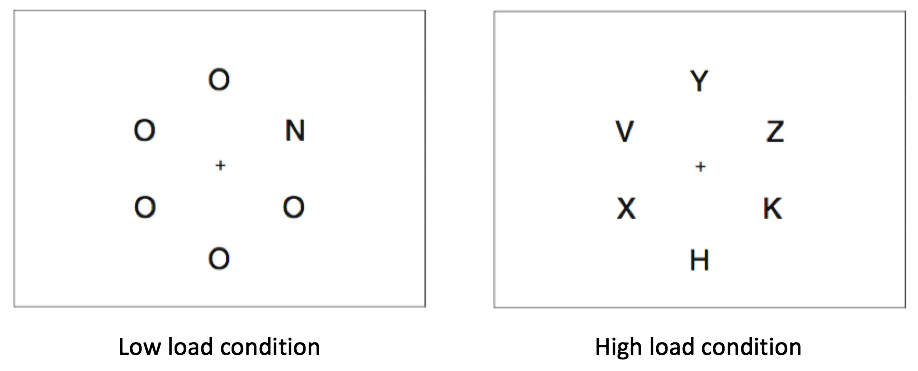Better get those headphones: We can’t really ignore task-related noise
Like many people, I work in an open office. Workers increasingly find themselves in open offices as companies (and universities) switch to these layouts in a bid to maximize space and reduce building costs.
In my case, I work remotely but share a local co-working space to be around other people during the workday. For the most part, I find that being surrounded by others working is energizing, not distracting. There’s one exception however. Talking.
It’s not just any kind of talking that leads to distraction, however.
The majority of the people in my office speak French, but I’m not a fluent French speaker. If someone around me is speaking French, I almost never get distracted by what they’re saying. If someone is speaking English and making a sales call about a specific product or software, it rarely distracts me either. However, as soon as an English speaker starts talking about numbers or statistics, l cannot for the life of my focus on what I’m doing. Which, 9 times out of 10, has something to do with numbers or statistics.
I’m not alone in getting distracted by open office chatter. Criticism of open offices has been getting louder and louder in recent years. And, by far, the biggest complaint seems to be about noise.
The majority of open office workers complain about the effects of noise, especially talking, on their ability to concentrate. And the information content of talking seems to affect just how distracting it is.
Why is it so hard to focus on a work task when surrounded by noise? And why do some types of noise seem so much more distracting than others?

The importance of task-relatedness
A recent article in the Psychonomic Society’s journal Attention, Perception, & Psychophysics suggests that one factor that matters is how closely related the noise is to the task you’re doing. When people are engaged in a visual attention task, they couldn’t ignore noises related to the task. And this effect was stronger when the task was demanding.
Here’s how the experiments were conducted.
Researchers Tellinghuisen, Cohen, and Cooper asked people to attend to a circular array of items and report when they saw particular targets. For example, when the items were letters, people were asked to report seeing Xs and Ns using different key presses. On some trials an X would appear in the array, and on others an N would appear.
The other items in the array determined how demanding the task was. In the low processing load condition, all the other items were identical Os, making the N or X easy to find. In the high processing load condition, the other items were five different letters, making the task more demanding. The figure below displays stimuli in the two conditions.

On each trial people also heard a spoken sound that they were told to ignore. The sound was either compatible with the trial (e.g., the spoken letter “N” when searching for the N), incompatible with the trial (e.g., the spoken letter “X” when searching for the N), or unrelated to the trial (e.g., the letter “L” when searching for the N).
Hearing compatible sounds helped people speed up, regardless of how demanding the trial was. In contrast, hearing incompatible sounds slowed people down, but only if the trial involved a high processing load.
One interpretation of these findings is that having a high processing load in the visual modality reduced people’s ability to inhibit processing in the auditory modality.
The experimenters also tested whether the specificity of the sound makes a difference for its likelihood of being processed. In this next experiment, people either looked for a letter (X) or a number (4) in an array. They heard a sound specifying one of the items (“X”, “4”) or the category the items belonged to (“letter”, “number”). The sound was either compatible with the trial (“X” or “letter” when searching for the X, “4” or “number” when searching for the 4) or incompatible (“4” or “number” when searching for the X, X” or “letter” when searching for the 4). Naming specific items had a larger effect on how people performed than did naming item categories, suggesting that sounds closely related to a task are more likely to be processed.
These findings suggest that when people try to complete a task and actively ignore the sounds going on around them, they still end up processing any sounds related to the task. And the more closely related the sounds are to the task, the harder they are to ignore.
Back to open offices
How might these findings by Tellinghuisen and colleagues inform people’s experiences of open offices? For one, environmental sounds that are related to people’s tasks are probably much harder to ignore than ones that aren’t.
There’s already evidence that both speech and non-speech noise in the office can be distracting. However, people are particularly distracted by speech, and speech that is related to—but not fully compatible with—what someone is doing may be the hardest to tune out.
Minimizing distraction from speech is important because distraction can lead to mistakes. For example, pharmacists working in in an environment where others were having conversations made more mistakes and were slower than when working surrounded by office machine noises.
On the flip side, task-related sounds might also be used to aid work performance. Some tasks involve monitoring for a rare visual signal, such as a safety alert. Tellinghuisen and colleagues suggest that one way to take advantage of the task-relatedness effect would be to design auditory signals that map onto visual signals. In this case, the auditory signals might act as a cue to improve visual detection.
There’s already evidence that people are better at detecting a visual target when the target appears at the same time, or right after, a tone. Perhaps creating specific auditory-visual signal pairs could further improve detection. For example, workers in charge of operations at a manufacturing plant may see hundreds of alerts throughout the day, with a tiny fraction being truly urgent. Training the workers on auditory tones that correspond to less-urgent and more-urgent alerts might improve their discrimination.
A final take-away is that it seems to be harder to tune out task-related sounds when the task is demanding. If people are engaged in a work task that requires little attention, it might not matter as much how much noise there is in their office.
Maybe the open office will soon die. New trends suggest a move to flexible office spaces where certain areas are sound-proof to encourage concentration and other areas are designed for phone calls or meetings. For now though, there are always noise-cancelling headphones.
Article focused on in this post:
Tellinghuisen, D. J., Cohen, A. J., & Cooper, N. J. (2016). Now hear this: Inattentional deafness depends on task relatedness. Attention, Perception, & Psychophysics. DOI: 10.3758/s13414-016-1169-5.
